User talk:Stephen2nd/Sandbox (c)

The Science and Art of Heraldry: Since the reign of Henry III: English heraldry has been regarded as a Science, by being in possession of a system, a classification, and a technical language of its own. It is still the essence of a heraldic language to be concise yet complete, expressive, and abounding in suggestions. Repetition of any important word is scrupulously avoided; and, where it would be required, another form of expression is substituted in its stead. Much meaning is left to be implied and understood. [1]
In 1989, an Englishman with the birth-name of Stephen Mowbray McDermott, whilst researching his family history, accidentally discovered his names of STEPHEN & Mc & DERMOTT en-Cyphered on\in the Garter and motto of the: Royal Arms of the United Kingdom; This article exemplifies these cryptographic words/names as Ciphers in the Royal Arms.
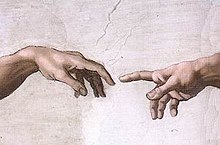



- Existing before all known languages, fingers, hands and Arms, have always been a means of communication, to simply point is internationally understood: The picture St. Thomas Becket faces King Henry II in a dispute; is thus described due soley to the images of their hands and fingers. The portraits of Kings Henry VIII and Richard III, both emphasise their Right Hand little fingers. Richard III is also depicted as grasping the Heraldic badge of St. George and the Dragon; suspended from the Chain of the Order of the Garter in his right hand, with specific emphasis on his Right Hand little finger: The emphasis of Right Hand, little finger and Garter, convey hidden communications.
- These same emphases are repeated by King Charles I: "Charles the Martyr" by W Marshall illustrating the “Eikon Basilike”, also shows King Charles grasping the Chain of the Order of the Garter, and specifically emphasising his Right Hand little finger; depicted pointing to the letters: IN VERBO TVO SPES MEA: (In Thy Word is My Hope):
- Charles also appears to be in thought about God, also thinking about a symbolic crown, whilst holding a crown of thorns of the Son of God; this crown of a circularity wreath symbolizing a never-ending circle of eternity or Crown of Immortality; See: Bilblical origins Right Hand of God or God's Right Hand: [2] alluding to his Divine Right of Kings: DIEU et mon DROIT: (GOD and my RIGHT): Hand on a Bible Right Hand raised; defines a legal Oath before God.
- Eikon's emphases may be explained in reference to the Royal Arms of King Charles I; which can be seen above the main entrance of the Kings Manor, St. Leonards Place, York, near to York Minster. Henry VIII and Charles II stayed at the Kings Manor, as did Charles I (1633 & 1639): Depicting a first use of his Unicorn supporter, the Royal Motto; DIEU ET MON DROIT, has the [ N ] of MON carved in reverse. The Garter motto is also re-defined, as exampled in the Royal Arms of King Charles II (dated: 1682): (Christow Church, Devon): GARTER motto: MAL PENSE HONI SOIT QUI: Uniquely, he letter [ Y ] is missing, also the letters PENSE are between the lions paws, (i.e. Paws for thought): and the letters HONI SOIT are between the Unicorn’s hooves:[3] NB: "Dieu et mon droit" means "God and my right", also; “God and my Right Hand:”[4][5][6][7][8] (i.e. motto of George III [9]):
Cyphers in the Garter:[edit]

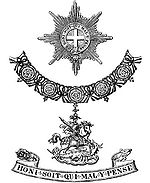


- According to the Kings Council Judge; Arthur Charles Fox-Davis of the Inner Temple, the armorial historian and author; [10] “Much ingenuity seems to have been expended in devising badges and mottoes which should convey an index of the name and family of the owner”. A concept repeated in the HMSO Encyclopedia: [11] Royal Arms: “Their functional purpose is the heraldic identification of the person, which should clearly identify a particular person”: The particular name on/in the Royal Arms since before King Edward III, and { on/i n } the current Royal Arms of the United Kingdom (2009) is: “Stephen Mc Dermott.”
- Fox-Davis also elaborates the fact that: “there are two ciphers one within and one without the Garter.” This statement is in direct reference to his image of “The Royal Arms of Great Britain, as determined by the Warrant in the reign of Queen Victoria”: (Plate: CXIV): With reference the concept of circularity, as pertaining to the Garter; The Royal Warrant depicts eleven Royal Heraldic badges, ten of which have no Garters, and one which is encircled with a Garter. The (main) Royal Arms Garter is encircled with the Chain of the Order of the Garter, itself, containing thirteen linked Garters, which revolves each individual Garter in turn, overall a full 360 degrees. All fifteen images of the Garter contain the Royal motto of the Garter; HONI SOIT QUI MAL Y PENSE: Each of the interlinked (30 total) Chain-Garters, is centered with an English Rose.
- The term; “there are two ciphers one within and one without the Garter,” is ambiguous. Fox-Davis only infers that the two ciphers are the monogram (V.R.) of Victoria Regina. However, only one of the (V.R.) Badge-Ciphers can be defined as; within a Garter. This Cipher within a Garter; is previously unknown, along with the Royal Badge of the Union Jack symbol of Britain on a shield, which was previously determined as the Duke of Wellington’s Augmentation, acquired by Prince Albert Sax Coburg-Gotha in 1852. The two Ciphers (V.R.) of Victoria Regina, may clearly identify a particular person, but, this is only one specific Cipher in reference to the Garter. However, in terms of ingenuity (in reference to heraldic identification, and an index of a name and a family): There are fifteen Cyphers, of the same name - Within the Garter itself, and also fifteen Cyphers of the same name elsewhere in the Royal Arms - Without the Garter. A Cypher of another name (Re: "ONI") Within and Without the Garter in the Royal Motto: also, seven ingenious cyphers heraldically defining terms (Mc) - on & in & Within & Without the Garter.
- NB: Such ingenuity redefines Cypher as Cipher: ''Secret or disguised manner of writing, whether by characters arbitrarily invented, or by an arbitrary use of letters or characters in other than their ordinary sense, by making single words stand for sentences or phrases, or by other methods intelligible only to those possessing the key; a cryptograph:
De-Ciphering the Garter:[edit]

- Cipher of STEPHEN in the Garter: The circulatory Garter cipher required certain procedures to be enacted, before the De-cipher could be achieved to depict its hidden name &etc. This procedure was re-discovered in the mid 17th century, in a quote attributed to Clarendon; “To open the cipher of other men’s thoughts,” i.e. PENSE defined as thinks or thoughts: THinKING representing TH in KING (KNIGHT); then when added to PENSE = King Stephen: This procedure incorporating phrases associated to ‘Think:’ (Eg: Think -on it: -about it: -it over): The next procedure referred to by Fox-Davis: “Given Pause” i.e. “Paws -for- thought.” To incorporate the “Holding between the paws,” i.e. PENSE between the lions paws: (Lion rampant: Supporter):
- (Re: Think -on- IT) = PENSE -on- HONI SO IT = H-PENSE-T: (Re: Think about it) = HO:PE NSE = Charles II Eikon Cipher: "In Thy Word is my Hope";
- Finally (think it over): = H-ESNEP-T: Place the "little finger" of the Right Hand as a pivot on the [ N ] of the H-ESNEP-T;
- Then simply point the index finger (left and right)-(seven times)-(L:R:L:R:L:R:L): Thus, de-ciphering the Garter letters into the name of S:T:E:P:H:E:N:

- NB: Stephen means Crown & Wreath: St. Stephen: 1st Christian Martyr: St. Stephens Tower; (Westminster Palace; Houses of Parliament): now re-named as Big Ben: St. Stephens Day (26 December): now Boxing Day: King Stephen of England: Stephen Archbishop of Canterbury - Magna Carta 1215ad:
De-Ciphering of the Mc:[edit]
- Cipher of Mc in the Garter:
De-Ciphering the Motto:[edit]
- Cipher of DERMOTT in the motto: With specific reference to the aforementioned use of the “little finger” of the Right Hand, also, with specific reference to the reversed ( N ) of motto DIEU ET MON DROIT: Place the little finger of the Right Hand as a pivot on [ N ] of MON: Then simply point the index finger (right and left)-(seven times)-(R:L:R:L:R:L:R): Thus, de-ciphering the letters and name of D:E:R:M:O:T:T: NB: Historically; the name "Mc Dermott" derives from "Mac Diarmaid;" which means DIA = GOD -of- ARMAID = ARMS:
Arms: H. T. McDermott:[edit]
- Shield: (Ref: Sinister-chief-angled): Arms: Party per pale chevron argent & or, on chevron gules, between in chief three boars’ heads erased at the neck, and in base a cross crosslet azure, three trefoils or slipped of the second: Crest: A demi lion rampant or, holding between the paws a boars head erased: Motto: HONOR VIRTUTIS PRAEMIUM: (Honour and virtue is its own reward.)
Stephen M. McDermott[edit]


Daily Telegraph: 24 April 1996: (pg 4: St. George and the Dragon): “Patron Saint with a holiday home”: “Yet for one man, St. Georges Day was the most important of all. He spent it driving around London waving the flag of St. George from his car window. He told all who would listen that his family, the Mowbrays, were hereditary enforcers of Magna Carta. Asked what he did for a living, he said: “I do this.” If his fervoir seemed un-English there may be a clue to his temperament in his full name Stephen Mowbray McDermott. (by Tom Utley)
- York Minster: "Mr Stephen McDermot displayed the Royal Arms of the Red Dragon of Cadwallader in St. George's Chapel, York Minster, on Saturday 29 June 1991": NB: Stephen Mowbray McDermott and most of his ancestors, were born in Newcastle upon Tyne. England:
St. George: Flag:[edit]


- Exemplification: Newcastle upon Tyne: Arms: Gules Three Castles triple towered argent: Crest: On a wreath of the colours: A Castle as in the arms & issuant a Demi Lion guardant supporting a flagstaff or flying a forked pennon of the arms of St. George: Motto: FORTITER DEFENDIT TRIUMPANS: Triumphing by brave defence[12]: Ref: (1575): “The most ancient insignia.” Its origins defined as Thus:
- Once upon the Tyne, in 1080ad a new castle was built during at the command of William (I) the Conqueror, under the directions of his son Robert Curthose. The castle was built for to defend the Tyne Bridge, to secure a free pass for English armies returning from Scotland into Northumberland. Rufus, however, was the first to employ arms against it, against a rebellion headed by Mowbray Earl of Northumberland.
- 1090ad: Mowbray, re-founded and re-fortified Tynemouth monastery with cannons: In 1093ad: King Malcolm of Scotland and his son were killed against Mowbray, and his army defeated at a siege of Alnwick Castle; Malcolm and his son being interred in Tynemouth monastery.
- In 1095ad: Mowbray, having “Raised the Standard” of rebellion against William Rufus, the son and successor of William the Conqueror, the King marched against the new castle with a great army, and took it after a short siege together with several of Mowbray’s partisans. Undeterred, Mowbray converted Tynemouth monastery into Tynemouth Castle: Thither, William marched with his army against Mowbray in Tynemouth Castle, and after a siege of two months took the Castle by storm. William captured his brother and made him prisoner, but Mowbray escaped and took refuge in Bamborough Castle, which William also besieged, but finding it impregnable against Mowbray, erected a fully garrisoned castle blockade it, whilst William returned south. The besieged Mowbray twice escaped to his castle of Newcastle, eventually taking sanctuary in the Tynemouth church of St. Oswin, where he was captured and made prisoner.
- In 1110ad, Tynemouth Monastery Castle, which had been so much destroyed in Earl Mowbray’s insurrection, was again re-built. [13]
- The two Lions of the Dukes of Normandy descended through the Mowbray Earls of Northumberland: Richard Duke of Normandy’s daughter Harwise, was Geofrey Duke of Brittany’s wife. Their son Eudon, was father of Hawise, wife of Stephen (Comes Britannia), Lord of Richmond. Stephen was father of Maud, the mother of Alice, wife of Roger de Mowbray; son of Robert Mowbray and Maud the daughter of Judith, daughter of the Earl of Chester. See Letters Patent Richard II: Earl of Chester - Mowbray:
St. George: Dragon:[edit]


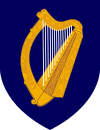
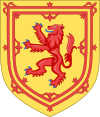

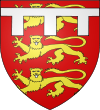


- The Dragon: is one of the most ancient of signs. It is carved on the corners of the Temple of Persepolis. Nothing is of so high account among the Chinese as representations of Dragons. Dragons were the Parthians’ ensigns, from whom the Romans in later times took them; and our Saxon ancestors from the Romans. It was also the device of the ancient British kings, as the lion was of the Norman Dukes; (Ref*: Earls of Northumberland). The chariot of the Ceridiven, the Ceres of the Druids, was drawn by dragons, creatures esteemed sacred by that ancient priesthood. Hence the beautiful lines of Gray, when celebrating the triumph of Owen, descended from Cadwallader, a name signifying supreme ruler of battle:
- Dauntless on his native sands; The dragon-son of Mona stands: In glittering arms and glory drest; High he rears his ruby crest.
- Dragon Badge: Arms: [14] :See also: Royal Standard of England
- Royal Badge: Henry VII: Uncrowned red dragon: Motto: Y DDRAIG GOCH DDYRY CYCHWYN (The Red dragon gives the lead)
- NB: Red Dragon Standard: Richard I (Crusades): Royal Arms Supporter; & Badge: Henry VII: Henry VIII: Edward VI: Mary I: Elizabeth I:
- Royal Badge: May 2008: (Replacing the Dragon and motto): Imperial crown atop a continuous scroll: together with a wreath consisting of the heraldic plant emblems of the four countries of the United Kingdom: New motto: PLEIDIOL WYF I'M GWLAD (I am true to my country)
- KINGS STATUTE: LETTERS PATENT: (C12th):
- Letters Patent: Written proprietary claim of right granted by a Sovereign to a designated person in a form open for public inspection [15] Patent (Disambiguation): A grant to a person conferring right or title: Ingenious or well contrived process:
- John I: Statute Letters Patent: (9 John: 1207-08):
- Letters Patent: "BRAY" ( Mow ):– "CASTLE": - "DERMOTT": - "STEPHEN": 1177ad:
- Richard II: Statute: Letters Patent:
- Letters Patent: Decree: Mowbray (Royal Crest & Lion's Rampant: Ostrich Feathers): Earl Marshal: Earl of Chester: Prince of Wales: Heir apparent: Inseperatably linked 1398: The son of Edward I. was Thomas Brotherton, who’s daughter Margaret was wife of John Segrave. Their daughter Elizabeth, was wife of John Mowbray; son of John Mowbray and Joan, daughter of Henry Duke of Lancaster, grandson of Henry III[16]
- Henry VI: Letters Patent: Barony by Writ: Exclusively male heirs of Henry VII: Recognised Peers (1489): Peers enobled by Letters Patent: Earls of Ulster: Earl de Courcey (1181) de Lacy (1205) (Mowbray): de Burgh (1264) Plantagenet (1354-1425) Margaret Brotherton (Wife of John Segrave): Duchess of Norfolk: Honour of Carlow: Bigood > (NB: D' Aubigny > Moubray = Royal Scottish Lion & Tressure): (1245) Plantagenet (1306) Segrave (1397) Mowbray (1399)
- James I : Letters Patent: Writ of Summons: *(his own) Hereditary Scots Peerages: Kingdom of Scots: Angus; Buchan; Caithness; Carrick (McDermott & Mowbray ); Fife; Galloway; Mar (McDermott & Mowbray); March (Mowbray); James I: Letters Patent: Rockingham; "Illuminated Patent by Indented Deed: 1640ad: Patrimony of MacDermot lineage including 389 Quarters extending over eight centuries (Circa 840ad to 1640ad):
- James II: Letters Patent: Writ of Summons: *(his own) Hereditary Irish Peerages: Ulster (1205) Carrick (McDermott and Mowbray) (1315) Kildare (McDermott) (1316) Louth (1319) Ormond (1328) Desmond (McDermott) (1329) Waterford (1446) : James II; ""expressed words"" his Irish predecessors:
A Message from his Majesty the King:
- To all serving in my Forces by sea or land, or in the air, and indeed, to all my people engaged in the defence of the Realm, I commend the reading of this book. For centuries the Bible has been a wholesome and strengthening influence in our national life, and it behoves us in these momentous days to turn with renewed faith to this Divine source of comfort and inspiration.” [17]
King James version of the Holy Bible:
- “Great and manifold were the blessings, most dread Sovereign, which Almighty God, the father of all mercies, bestowed upon us the people of England, when first he sent your Majesties Royal Person to rule and reign over us... We may rest secure and supported within the truth and innocency of a good conscience, which will ever give countenance to honest and Christian endeavours against bitter censures and uncharitable imputations.
Stephen2nd (talk) 17:42, 25 December 2008 (UTC)
Researched Citations:[edit]

- ^ English Heraldry: Boutell (1904)
- ^ Holy Bible: Acts 7:55, Mark 14:62 of the New Testament and Psalm 63:8 in the Old Testament;
- ^ Heraldic & Genealogical Notes From Devon Churches: Mike Brown: Dartmoor Press: (2002):
- ^ Kearsley’s Complete Peerage” (1799) - Translation of Mottos: (xxiii)
- ^ An Historical Encyclopedia (Pg 227).by M E Snodgrass, (2003)
- ^ Questions and Answers Notes and Queries” (Pg 109) by M de Albuquerque (1906)
- ^ Americana – (Pg 437): American Historical Society (1926)
- ^ History of American Genealogy (Pg 112) by RB Ferrall (1981)
- ^ Kearsley’s Complete Peerage” (1799) - Translation of Mottos: (xxiii)
- ^ Art of Heraldry; Encyclopedia of Armory. A.C. Fox-Davis. (1908) ISBN: 0906223342.
- ^ The Royal Encyclopaedia: Crown copyright (1991). ISBN: 0333538102:
- ^ City and County of Newcastle upon Tyne: College of Arms: (Exemplification (1954)):
- ^ Sykes: Local Records: Historical Register of Remarkable Events: (Pg.13-16): (1833):
- ^ Art of Heraldry; Encyclopedia of Armory. A.C. Fox-Davis. (1908) ISBN: 0906223342.
- ^ Merriam Webster’s Dictionary (2007):
- ^ The Complete Peerage of England, Scotland, Ireland, Great Britain, and the United Kingdom ISBN 0-904387-82-8
- ^ George VI: 15 September (1936): King James Bible: Active Service Edition.
External links:[edit]
- Portal:Heraldry/Web resources
- Free access to Burke's General Armory (incomplete, 1,500 British surnames), Pimbley's Dictionary of Heraldry and Blason des familles d'Europe, Grand Armorial Universel (15,000 European surnames)
- King James Bible
- Topics in cryptography
- User:Stephen2nd/Sandbox (c) - Extended historical references etc.
| 16. | |||||||||||||||||||
| 8. | |||||||||||||||||||
| 17. | |||||||||||||||||||
| 4. | |||||||||||||||||||
| 18. | |||||||||||||||||||
| 9. | |||||||||||||||||||
| 19. Elizabeth de Sully | |||||||||||||||||||
| 2. | |||||||||||||||||||
| 20. | |||||||||||||||||||
| 10. | |||||||||||||||||||
| 21. | |||||||||||||||||||
| 5. | |||||||||||||||||||
| 22. Sir Patrick de Chaworth | |||||||||||||||||||
| 11. | |||||||||||||||||||
| 23. | |||||||||||||||||||
| 1. Thomas de Mowbray Duke of Norfolk | |||||||||||||||||||
| 24. Gilbert de Segrave Son of Stephen de Segrave | |||||||||||||||||||
| 12. Nicholas de Segrave 1st Baron Segrave (12 -1295) | |||||||||||||||||||
| 25. Annabel de Chaucumbe | |||||||||||||||||||
| 6. Sir John de Segrave | |||||||||||||||||||
| 26. | |||||||||||||||||||
| 13. | |||||||||||||||||||
| 27. | |||||||||||||||||||
| 3. Elizabeth de Segrave (1338-1368) | |||||||||||||||||||
| 28. | |||||||||||||||||||
| 14. | |||||||||||||||||||
| 29. | |||||||||||||||||||
| 7. | |||||||||||||||||||
| 30. Sir Roger Hayles | |||||||||||||||||||
| 15. Alice Hayles | |||||||||||||||||||
| 31. Alice Skogan | |||||||||||||||||||
